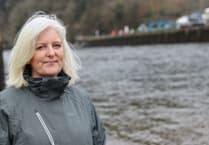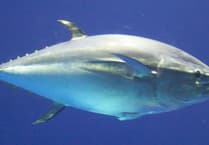The UK has the best wind resources in Europe, and we were the global leader in offshore wind energy, with more capacity installed than any other country, until 2021 when we were overtaken by China.
It’s a familiar story. China manufactures more solar panels, EVs and batteries than any other country. It is also making wind turbines, but their vast size makes international trade difficult. Having some protection from Chinese imports gives the UK’s wind energy industry a huge economic opportunity.
The UK is now building Europe’s first floating windfarm in the North Sea owned by Green Volt, a British and Norwegian company. The turbines are built on floating platforms that have long been used by the oil and gas industry but represent an engineering challenge. The benefits are great, however, they can be built in deeper waters allowing us to access much more wind.
The Crown Estate has identified the deep waters of the Celtic Sea between Ireland, South Wales and the Southwest as having potential for offshore floating wind. This location will help to smooth out the UK’s energy supply, because if the wind is not blowing in the North Sea it may well be blowing in from the West!
The development would provide a welcome economic boost to coastal communities bringing better paid jobs in research, servicing, platform construction, undersea cabling, vessels to service the sites and port development in Falmouth and Plymouth.
Cornwall Council has created its own company, Celtic Sea Power, to help deliver the benefits from floating wind to Cornwall and the region. The University of Plymouth has set up a state-of-the-art test facility for floating turbines to train up the next generation of skilled young people to develop and operate offshore wind.
A demonstration floating wind site will be built off Hayle in Cornwall, which is fitting as Cornwall was home to the UK’s first commercial windfarm. The story goes that it was a proposal by Margaret Thatcher’s government to build a nuclear power station in Cornwall that prompted farmer Peter Edwards to build 10 wind turbines on his dairy farm in Delabole in 1991.
In pursuing offshore wind, it would be a mistake to neglect onshore wind that can be sited close to where power is needed, like industrial estates. And community-owned energy can reduce bills for households. Ripple Energy is about to build the UK’s largest community-owned windfarm allowing ordinary people to own a share of a wind turbine. Ripple Energy manages the cooperative which has 16,000 members signed up to its third windfarm and 10,000 members jointly own its solar park in Torridge, Devon, currently under construction.
The UK is still a frontrunner in wind energy. By pioneering floating offshore wind, we are developing the engineering skills and expertise to build a world-class industry. To reap the economic benefits of a successful wind industry, we need to invest, and if we do not seize this opportunity, other countries will.



